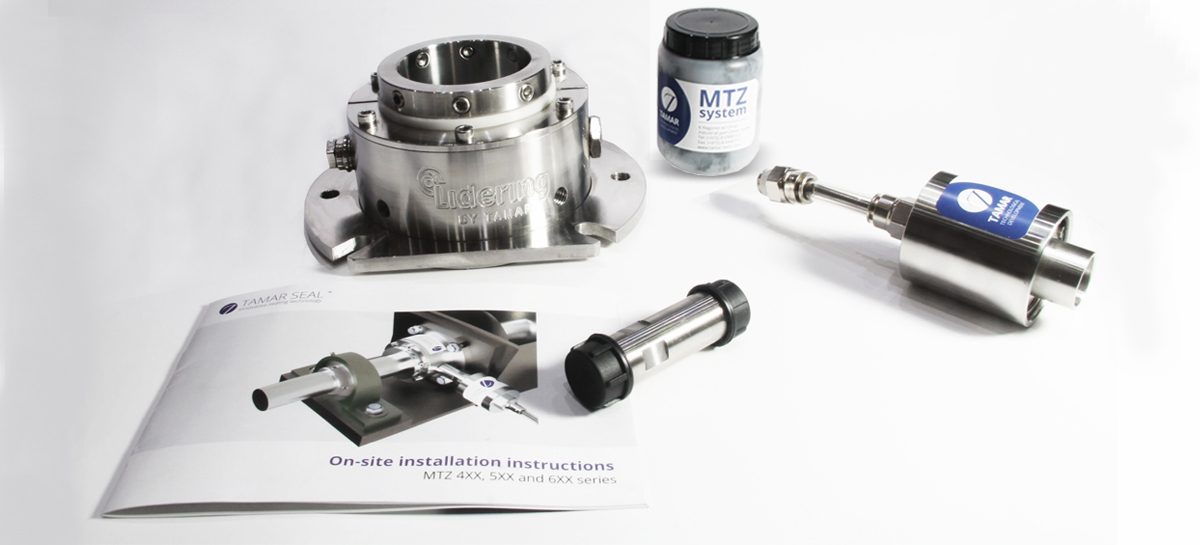Lidering: Dry Seals

There are many applications that work with powdered or extremely viscous products which have no lubricant properties to permit the mechanical seal contact surfaces to function without immediately becoming worn.
Finding a sealing element that guarantees sealing without leaks and adds durability to applications of this type poses a difficult challenge.
Braided packing is often used, which gives rise to the disadvantages of this kind of element, such as inevitable leakage to a greater or lesser extent, the use of elements prone to wear such as sleeves to protect the shaft, frequent maintenance to replace the sleeves and change the packing and periodic retightening to maintain the leaks at an acceptable level, among others. An alternative that makes it possible to work without these conditions will bring about a great improvement in process performance, as well as important economic savings.
Industrial sectors, for instance the building materials production sector (cement, plaster, pigments, etc.) usually require special solutions other than conventional braided packing. Other sectors such as the food industry, which manufactures products in powder form, such as sugar, and olive oil, or the pharmaceutical sector which processes ascorbic acid also encounter the same difficulties.
One solution might be the double mounting of mechanical seals that provide the necessary lubrication, provided they are compatible with the product, which is not always possible.
In such cases in which mechanical seals require complex auxiliary systems and/or materials that are particularly resistant to abrasion, Lidering has a high performance alternative, known as “Dry Seals”. This type of sealing system is new and offers innovative solutions in extreme cases of abrasion or a lack of lubrication.
Dry seals are patented sealing systems whose function is technically different to those of mechanical seals, as they have no contact surfaces that require lubrication or that could break due to vibrations. Neither do they require a barrier fluid that must be pressurised in relation to the product fluid, which means there is no possibility of the product fluid being contaminated in the event of a leak.
These systems are comprised of an internal chamber filled with a special semi-fluid substance that maintains a series of rings manufactured with abrasion-resistant materials pressed, in order to control the fluid that must be sealed.
Other systems for working with dusty fluids are air barriers, but they must be constantly supplied with compressed air to keep the product “fluid” away from the sealing area and this incurs high operating costs. On the contrary, Dry seals use a compressed air line to function correctly, but they do not need to consume its flow, which means there is no airflow through the seal and the seal does not become worn.
Dry seals offer an alternative for dusty or extremely viscous applications that guarantees complete sealing, minimum maintenance, protection of the other system components such as the wear of the shaft and less energy consumption due to motor friction.
Furthermore, Dry seals offer the option of including the bearing in the flange body, thus simplifying the system by facilitating its maintenance and operation.
For more information, please visit: https://www.lidering.com/en/blog/
News Categories
- » NEWS HOME
- » Automation & Robotics
- » Industry 4.0
- » Material Handling
- » Sensors
- » Quality & Testing
- » Machine Vision
- » Laser & Optics
- » Metalworking
- » Motion Control & Drives
- » Hydraulics & Pneumatics
- » Process Industry
- » Renewable Energy
- » Agriculture
- » Home & Office Furniture
- » Environmental Tech









